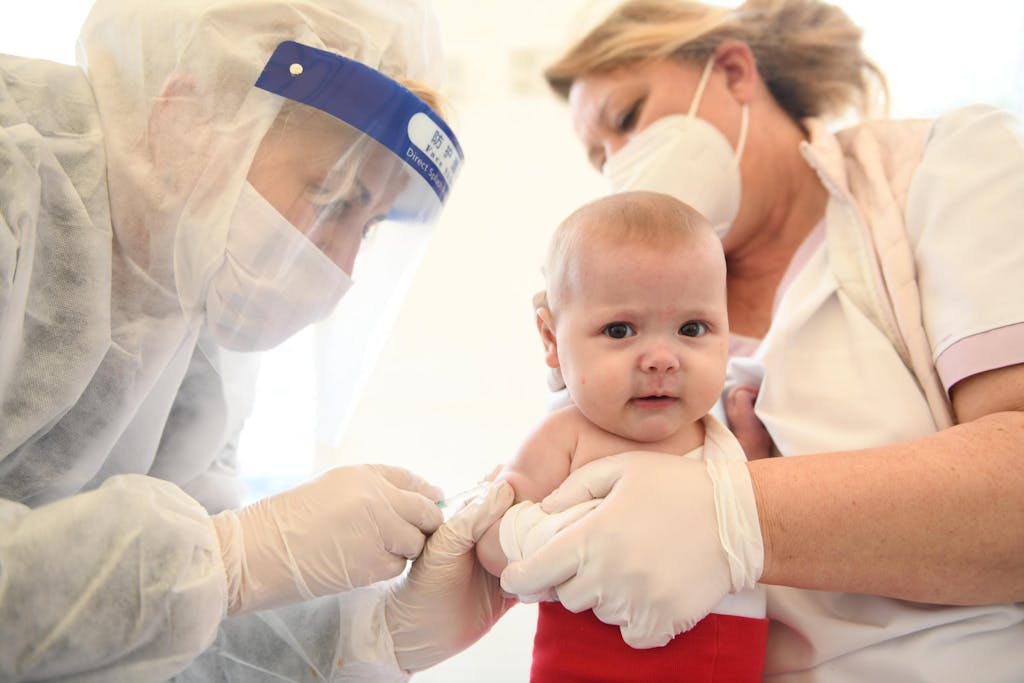Since news of the novel coronavirus broke 10 months ago, headlines have grown more distressing by the day. But amid a sea of bad news, there are bright spots in the global fight against COVID-19.
Scientists and medical professionals understand this virus better than they did at the outset, and our ability to detect and treat COVID-19 has improved significantly since the pandemic’s early days. And despite what feels like a never-ending wait, COVID-19 vaccines are on track to be the fastest vaccines ever developed — by a long shot.
Positive and encouraging developments for COVID-19 tests and treatments have emerged in recent weeks, as well as a groundswell of support for global efforts to ensure that no one is left behind when vaccines hit the market.
Check out some of the good news below you might have missed.
Tests Are Faster
The World Health Organization (WHO) recently approved a first-of-its-kind rapid diagnostic test for emergency use. The test is simple to use and produces results in 15 to 30 minutes. Another plus: It doesn’t require trained health workers to administer or laboratory facilities to process.
This is a game-changer for COVID-19 testing and potential control of the pandemic. With results available in minutes — not hours, days, or weeks — patients can isolate immediately, contact tracing can begin sooner, and ultimately, outbreaks can be contained faster.
Making this bright spot even brighter: A global partnership committed to make 120 million tests available to low- and middle-income countries at just $5 a test. Because these tests require minimal equipment and can be completed on-site, they are particularly well suited for low-resource areas with fragile health systems.
The fact that these tests are being made available — and affordable — to low- and middle-income countries at all is a testament to the efficacy of the Access to COVID-19 Tools (ACT) Accelerator. A global partnership led by WHO, the ACT Accelerator is making sure that COVID-19 tests, treatments, and vaccines are equitably distributed regardless of a country’s ability to pay.
Treatments Are Better
Researchers and clinicians across the globe have been working around-the-clock to improve patient outcomes. And although there may never be a cure for COVID-19, a number of evidence-based treatments have shown promise.
By working to suppress the immune system’s overreaction to the virus, the steroid dexamethasone has reduced deaths in patients with severe cases of COVID-19 who are on a ventilator or oxygen or both. Remdesivir is another drug that has proven effective against COVID-19, but unlike steroids, it is an antiviral that blocks the virus from entering healthy cells and replicating. Remdesivir has been found to speed up recovery times in patients hospitalized with severe cases.
Monoclonal antibodies are also under investigation as a potential treatment option. By giving what’s known as convalescent plasma — or blood from recovered patients — to sick patients, the hope is that these naturally produced antibodies will boost the patient’s immune response to the virus. Two recent monoclonal antibody studies have generated considerable optimism. Preliminary trial results indicated that Eli Lilly’s monoclonal antibody drug reduced symptoms and lowered the risk of hospitalization for newly diagnosed patients by more than 70%. Regeneron has also announced that its so-called antibody cocktail significantly reduced viral loads — and symptoms — in COVID-19 patients.
While studies are ongoing and no one treatment is expected to ever be curative, these are encouraging developments. This good news in the global fight against this deadly virus is reason to hope that more and more patients will be able to recover from COVID-19.

Vaccines Are Closer
COVID-19 vaccines are being developed in record time. Already — less than a year after scientists identified the genetic blueprint for the novel coronavirus — 36 candidate vaccines are in various phases of clinical evaluation and an additional 146 are in preclinical evaluation.
While the world waits for an approved COVID-19 vaccine, plans are already underway to ensure that eventual vaccines are equitably distributed. Those plans are being spearheaded through the ACT Accelerator’s vaccine pillar, known as COVAX, which aims to deliver 2 billion vaccine doses by the end of 2021.
And in a bright spot for global solidarity, world leaders and private companies stepped up — big time — to support COVAX at the United Nations General Assembly (UNGA) this year. With additional countries signing on, the total number of countries that have joined the global vaccine initiative reached 180. That represents 90% of the world’s population.
The United Kingdom, Brazil, Canada, Germany, and Japan announced significant funding commitments, and the private sector committed to make vaccines available regardless of a country’s ability to pay. Johnson & Johnson committed to make 500 million vaccine doses available to low-income countries in partnership with the Bill & Melinda Gates Foundation, while AstraZeneca committed to make its vaccine, if it’s approved, available at no profit cost. Although it is very encouraging to see this outpouring of solidarity, more commitments are needed to close the funding gap in time to scale up manufacturing to meet the ambitious deadline.
These announcements represent a growing recognition across governments and sectors that the so-called vaccine race can be won only if nations cross the finish line together. And that’s a bright spot worth celebrating.
Conclusion
More than any one test, treatment, or vaccine, the most powerful tool in the global fight against COVID-19 is solidarity. Because with this virus, if any of us are at risk, we are all at risk. To end this pandemic, we can’t leave anyone behind. And taken together, these bright spots reveal a deep commitment across countries and sectors to ensure that everyone, everywhere gets to the other side of this pandemic, together.
Join us in the call to Unite for Health so that we can all recover better from COVID-19.
Featured Photo: UNICEF/JuanHaro



 View All Blog Posts
View All Blog Posts

